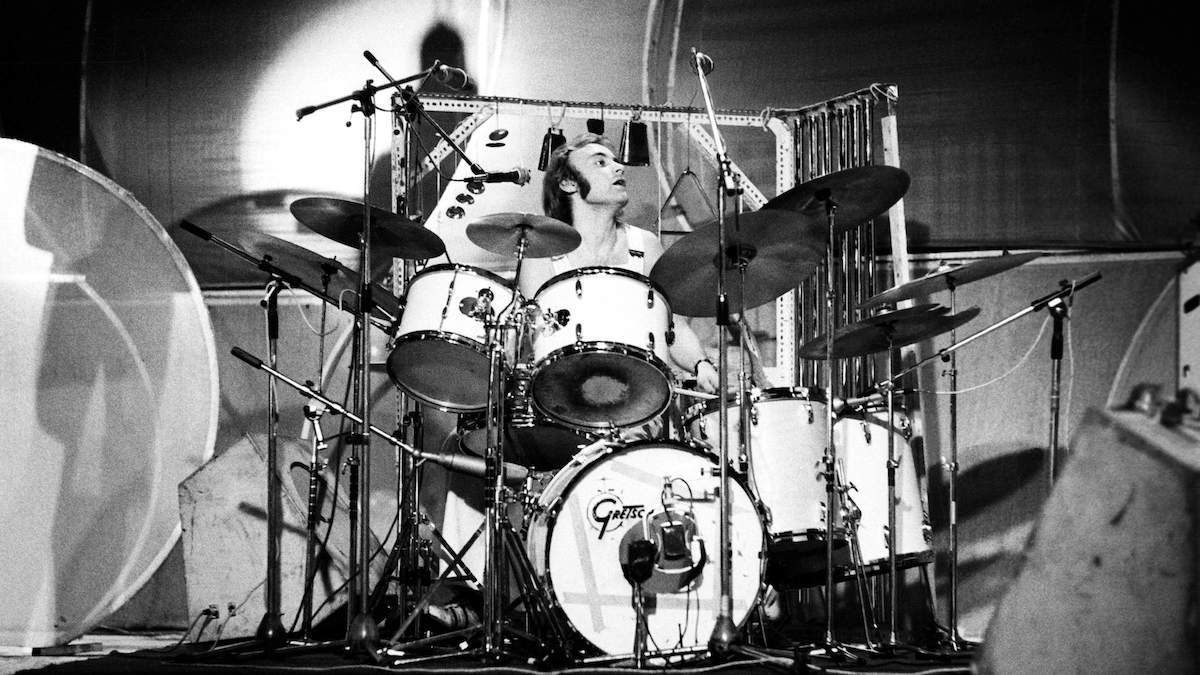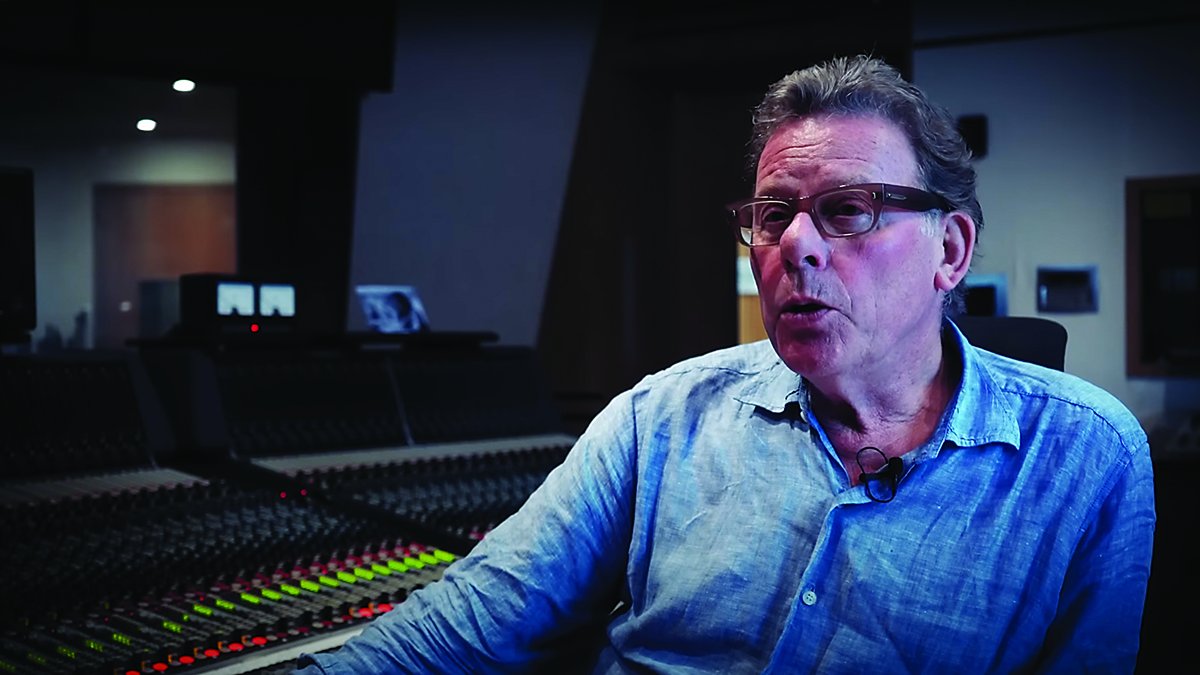"I didn't sit down and think, 'What would be the best drum fill?' I just did it. It could have been anything" : Phil Collins reveals how his iconic In the Air Tonight drum fill was created, and how it became the genesis of '80s gated reverb
A 1985 interview reveals how Phil played 'that' fill, and how the recording created the gated drum sound that defined the '80s and beyond

It might well be just four seconds long, but the fill in Phil Collins' In the Air Tonight is, quite simply, the most recognisable piece of drumming ever committed to tape.
Its fame might well have been helped along by a certain gorilla reenactment, and by a thousand guests at a wedding near you hitting those air drums like their lives depend on it, but, whatever, it's a masterpiece of recording. And like that's not enough, it helped give rise to the gated drum sound that defined '80s music production.

So how did Phil come up with it? Well, according to a 1985 interview, he just sat down and played the fill without any planning whatsoever. One take and 14 hits later – that's 10 tom and four bass drum hits, according to our drum experts – and we're still talking about the legendary fill 43 years on.
"It could have been anything," Phil said on how he created it. So here's a reminder of how that "anything" turned out. And, yes, you can skip to three minutes and 16 seconds, if you like…
You could argue that the fill stands out because it enters the track unexpectedly – that it is at odds with the rest of the brilliant atmosphere in Phil's 1981 debut solo single. You could argue that it's about the sound of the drums, or how they were recorded. You could even argue that the fill has become so iconic thanks to, yes, that chocolate advert.
But stop arguing with us for goodness' sake because, quite simply, the drum fill from In the Air Tonight is about all of the above, and how those 11 hits slot so effortlessly into the track, introducing its incredible concluding third.

In the interests of recording, though – and if for nothing else because it introduces Peter Gabriel into the story – we should go into detail about the sound of the rest of the drums on In the Air Tonight. And putting Phil's fill aside for one moment, this is all about how the legendary '80s gated reverb drum sound was born.
Want all the hottest music and gear news, reviews, deals, features and more, direct to your inbox? Sign up here.
That is why the sound was so interesting because it is going from all to nothing in milliseconds.
Producer Hugh Padgham
In this 2014 MusicRadar interview, producer and engineer Hugh Padgham revealed how the drum sound first originated while Phil was playing on Peter Gabriel's self-titled third album. He explained how it came about through a combination of compression on the drums and gating them fast, using a then all-new SSL mixer.
"When you compress a drum sound in a live room like that it makes it just sound much bigger," he said, "and it makes the room sound bigger as well. Therefore when you go from something sounding big to nothing, you get this feeling of massive contrast. That is the whole essence of why the sound was so interesting because it is going from all to nothing in milliseconds.
"When Phil was playing the drums one day, I opened this microphone to speak to him to hear what he was saying while he was still playing the drums and out came the most unbelievable sound. Everyone went, 'oh my god', that sounds incredible."

Back to the 1985 interview with Phil Collins – from the magazine International Musician & Recording World – and he largely agreed with Padgham's assessment of how the In the Air Tonight drum sound was created.
I started playing the pattern. I knew it was good and I said to Pete [Gabriel] afterwards, 'If you don't want it, I do'.
Phil Collins
"I was playing around in the live room while Hugh the engineer was mucking around with some noise gates and compressors, and this drum sound started developing and I was hearing it through the headphones.
"I started playing with the sound and playing [the In the Air Tonight pattern] because that was the tempo being set by the gate's cutting off. Pete [Gabriel] was in the control room and said that was great, 'just do that for 10 minutes'. So I started playing the pattern. I knew it was good and I said to Pete afterwards, 'If you don't want it, I do'."
As it turned out both used it, with Peter Gabriel's track Intruder being the first to introduce the 'gated reverb drum sound' to the rest of the decade. Recognise the drums at the start?
But Collins would benefit from that recording session too. He took the pattern he'd created and the same recording method into the studio for his first solo album, Face Value. As if having helped create the gated reverb sound for it – pretty much by accident – he then came up with the quite extraordinary In the Air Tonight to go with it.
Although that fill has apparently become a trade mark of mine, it could have been anything. I didn't sit down and think 'What would be the best drum fill to do?
Phil Collins in 1985
And if those two musical occurrences aren't enough for you – you very demanding individual, you – just wait until you hear how he came up with the iconic drum fill that blasts into the song two-thirds of the way through.
"Although that fill has apparently become a trade mark of mine," he said in the 1985 interview, "it could have been anything. I didn't sit down and think, 'What would be the best drum fill to do?' I just decided where I wanted the drums to come in, and sat down and just did that. There's probably another take somewhere with me doing something totally different."
So there you have it. If you're struggling with your solos or your sounds, the answers to your production and playing issues might well just be: you're over-thinking it. Take a leaf out of Phil's book and just go for it. We'll come and interview you in 43 years time.
In the meantime, here's to the first two individuals responsible for the genesis (sorry) of the gated reverb drum sound.

Andy has been writing about music production and technology for 30 years having started out on Music Technology magazine back in 1992. He has edited the magazines Future Music, Keyboard Review, MusicTech and Computer Music, which he helped launch back in 1998. He owns way too many synthesizers.

